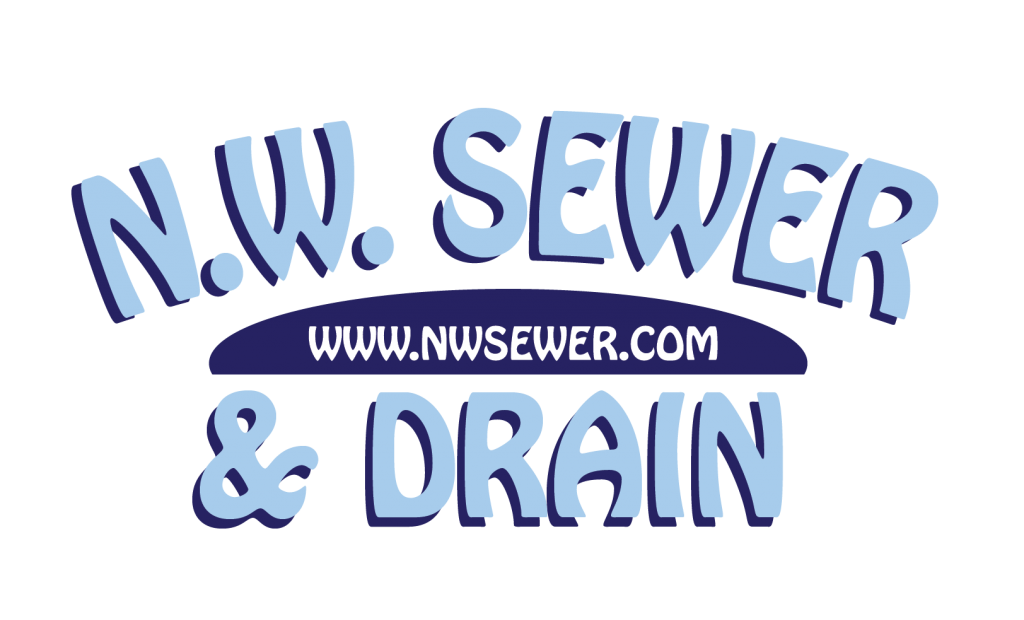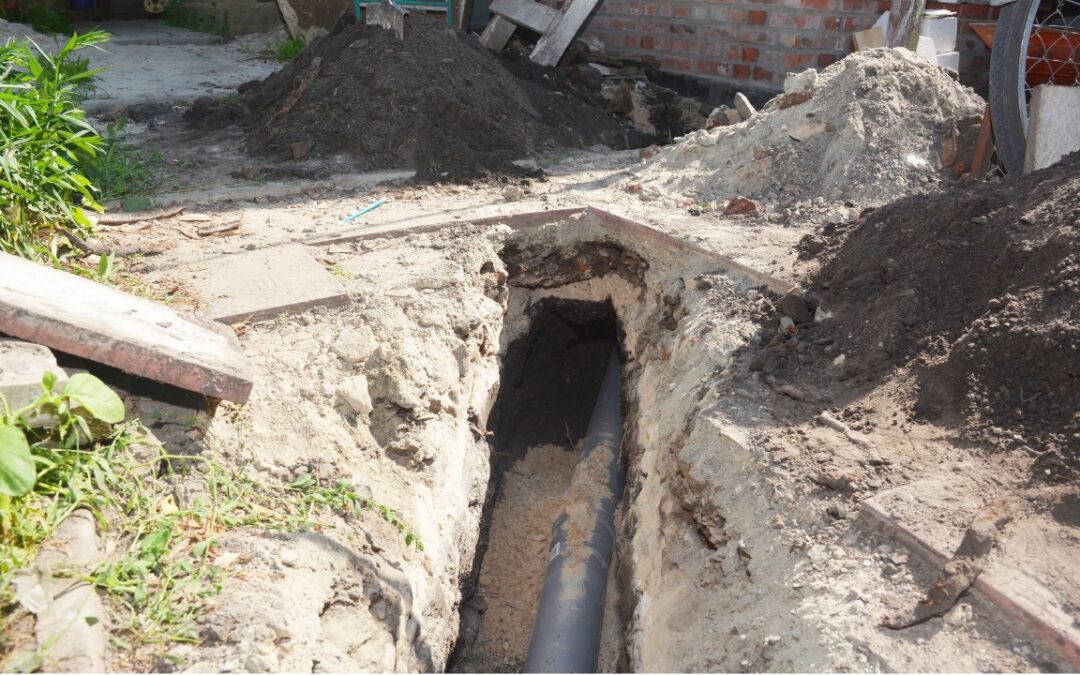Imagine this scenario: A homeowner wakes up to the unpleasant surprise of a backed-up shower drain and a foul odor filling their bathroom. Imagine the dread of a backed-up sewer line, a pungent stench filling your home, and the realization that a costly repair is imminent. After calling a plumber, they hear words that every homeowner dreads: “It looks like you need a sewer line replacement.”
Beyond the immediate stress, the next question looms large: How much is this going to cost?
This scenario highlights the importance of understanding sewer line replacement costs. A sewer line, often referred to as a sewage line, is an essential component of your home’s plumbing system, responsible for carrying wastewater away. Over time, these lines can become damaged due to tree roots, aging, ground shifts, or general wear and tear. And when does it encounter issues, this can lead to significant inconveniences and expenses.
Understanding the Cost of Fixing Your Sewer Line Problems
Several factors influence the cost of sewer line replacement, including the pipe material, line length, accessibility, repair method, labor costs, and the specific problem at hand. By understanding these factors, you can better prepare for potential sewer line issues and make informed decisions regarding repairs or replacements.
We break down the factors that influence sewer line replacement costs in this article, as well as common issues, and tips to keep those expenses in check.
Factors Influencing Sewer Line Replacement Cost
Replacing a sewer line involves various factors that can significantly impact the overall cost. Let’s explore the key aspects that determine how much you might pay for this repair.
Pipe Material
The type of material used for your sewer line can have a considerable effect on replacement costs. Common materials include:
- PVC (Polyvinyl Chloride): PVC is often the most affordable option. As a recent post at Angi.com notes, “Simple PVC sewer pipe starts at $4.50 per linear foot, while copper can cost as much as $85 per linear foot.” And PVC is lightweight, durable, and resistant to corrosion, making it a popular choice for modern sewer lines.
- Clay: Clay pipes are commonly found in older homes. While they are resistant to certain chemicals, they are prone to cracking under pressure. Replacing clay pipes can cost around $50 to $100 per foot.
- Cast Iron: Known for its strength, cast iron can last for decades. However, it’s susceptible to rusting over time, which can lead to blockages. The average cost of cast iron pipes is between $10 and $20 per linear foot for the material, with an additional if you include labor. Most pipes range from 10 to 60 linear feet, with the average length being about 30-foot.
Each material has its pros and cons, and the choice often depends on the existing pipes and budget. Generally, PVC offers the best balance between affordability and durability, making it the most common choice for replacements.
Line Length
The length of the sewer line that needs to be replaced plays a crucial role in determining costs. A shorter replacement, such as a 10-foot section, may cost between $1,500 and $3,000. However, replacing a longer line, such as 50 feet or more, can quickly increase the price to $5,000 to $15,000.
For homeowners who need to replace the entire line from their house to the main sewer line, costs can reach $7,000 to $25,000 or more, depending on the length and complexity of the job.
Accessibility
The location and depth of your sewer line can also impact replacement costs. Lines that are deeper underground or located beneath concrete slabs, driveways, or landscaping require more labor and equipment to access.
- Cost to Replace Sewer Line Under a Slab: If the sewer line runs under a concrete slab or foundation, the cost can be significantly higher due to the need for excavation. Replacing a line under a slab may cost an additional $2,000 to $5,000.
- Landscaping and Obstacles: Removing obstacles like trees, bushes, or paved surfaces can add to labor costs. If a sewer line replacement requires extensive digging through a landscaped yard, homeowners should budget for additional expenses.
Repair Method
There are two primary methods for replacing a sewer line: traditional trenching and trenchless technology.
- Traditional Trenching: This involves digging a large trench along the entire length of the pipe. It’s the most labor-intensive option and can be more disruptive to your property. However, it’s sometimes necessary for severely damaged lines. The cost for this method ranges from $50 to $250 per foot.
- Trenchless Methods: Options like pipe bursting and pipe relining are less invasive and often more cost-effective in the right situation. Pipe bursting involves breaking apart the old pipe while pulling a new one into place, while relining involves inserting a new lining inside the existing pipe. Trenchless methods typically cost between $1,900 – $6,000, making them a popular choice when possible.
Labor Costs
Labor costs vary depending on location and the experience of the plumbers or contractors hired for the job. In areas with a higher cost of living, labor rates can be significantly higher, ranging from $50 to $200 per hour.
Hiring a qualified, experienced professional is crucial to ensure the job is done correctly. Cutting corners by hiring the cheapest option can lead to more problems down the line, so always choose a reputable plumber with good reviews.
Common Sewer Line Problems and Associated Repair Costs
Sewer line issues can range from minor clogs to complete collapses. Understanding the nature of these problems can help you gauge the potential repair or replacement costs.
Clogs and Blockages
One of the most common sewer line issues is a blockage caused by tree roots, grease buildup, or foreign objects. Clearing a minor clog may cost between $150 and $500, but severe blockages requiring more extensive work can range from $1,000 to $3,000.
Leaks and Cracks
Over time, small cracks or leaks can form in sewer lines due to shifting soil or general wear. If left untreated, these leaks can worsen and lead to significant water damage. The cost of repairing a minor leak typically ranges from $500 to $1,500, but costs can go higher, and larger cracks may require partial pipe replacement. For example, according to an article from Forbes,
“Fixing a break or crack in a buried outdoor sewer line can cost from $1,100 to $4,000. On a linear foot basis, fixing a break or crack in a sewer line runs from $75 to $500 per foot.”
Collapsed Sewer Lines
A collapsed sewer line is a serious problem that usually requires a complete replacement. This can happen due to severe root intrusion, old age, or shifting ground. Repairing a collapsed sewer line can cost anywhere from $3,000 to $10,000, depending on the extent of the damage and the method used for repair.
Sewer Main Issues
In some cases, the problem may lie in the main sewer line that connects your home’s plumbing to the municipal sewer system. Replacing the main sewer line can be more complex and costly, with prices ranging from $5,000 to $20,000 or more. According to This Old House,
“Overall, the average price for sewer line replacement is about $6,000. Typically, you’ll pay between $50 and $250 per linear foot of sewer line, though the pipe material used and the difficulty of accessing the existing pipe can affect your price. Additionally, excavation, backfill, and landscaping may add extra expenses to your project.”
Tips to Minimize Sewer Line Replacement Costs
Replacing a sewer line is a significant expense, but there are ways to keep costs under control:
Regular Maintenance
Routine maintenance, such as annual inspections and proper use of drains, can help you avoid major problems. Avoid flushing non-degradable items and keep tree roots in check with root-killing treatments to prevent root intrusion.
Get Multiple Quotes
Before committing to a replacement, get quotes from at least three reputable plumbing companies. Comparing prices can help you find the best value and avoid overpaying.
Consider Trenchless Options
Trenchless methods can save money by reducing excavation and property damage. If your sewer line qualifies for trenchless repair, it’s worth considering as a cost-effective alternative.
Explore Financing Options
Some plumbing companies offer financing or payment plans to make major repairs more manageable. Be sure to ask about financing options before ruling out a necessary replacement.
Your Local Source for Quality Sewer and Drain Service and Repairs
Being aware of sewer line replacement costs is essential for homeowners to be prepared for potential plumbing emergencies. And by knowing the factors that influence the cost and taking proactive steps to maintain your sewer line, you can minimize expenses and ensure a smooth-functioning plumbing system.
Sewer line replacement is a significant but sometimes unavoidable expense for homeowners. However, investing in a high-quality repair now can save you money and stress in the long run.
If you’re facing sewer line issues or want a professional assessment, contact us today for a free estimate on your sewer line replacement needs! At NW Sewer and Drain, we’re here to help you keep your plumbing in top condition!




